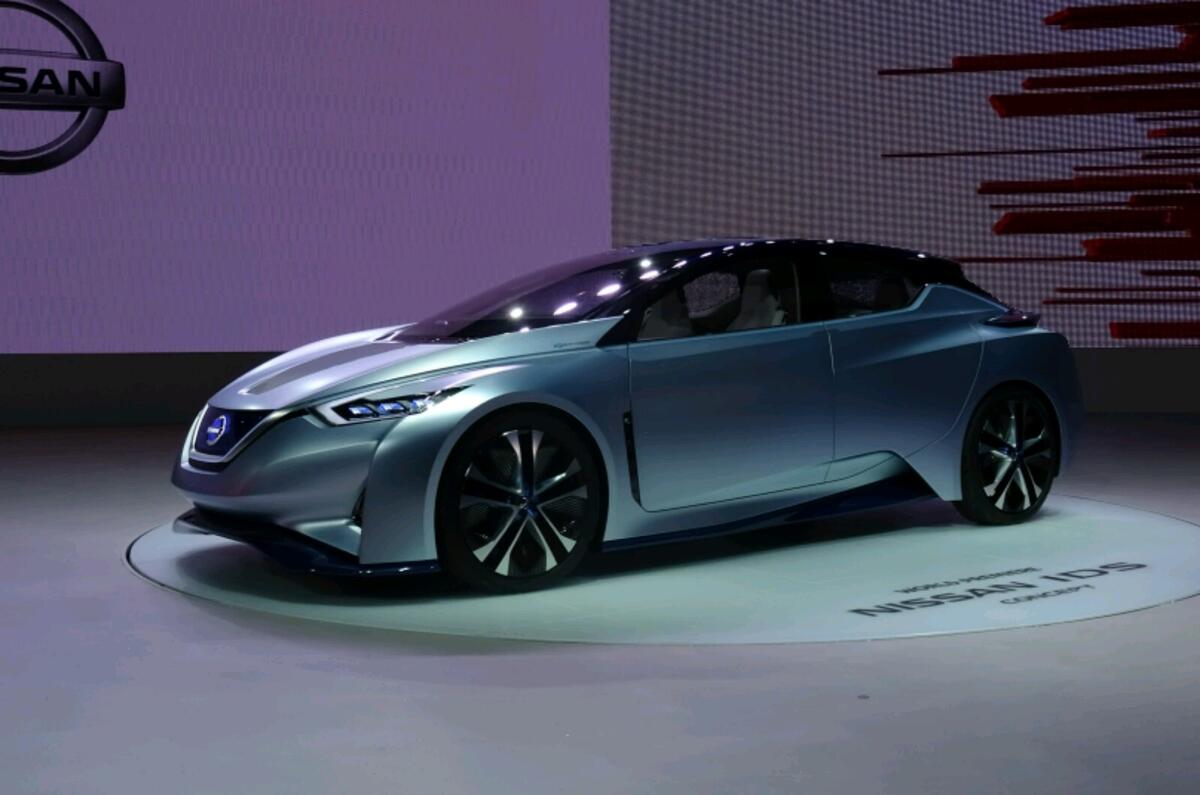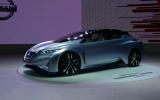The Nissan IDS Concept, a four-seat hatchback that hints strongly at the styling of the next-generation Nissan Leaf, has been revealed at the Tokyo motor show.
It has two different cabin configurations depending on whether the driver selects the conventional manual driving mode, or the 'piloted' mode built in via its on-board artificial intelligence.
"It's like relaxing in a living room," says design director Mitsunori Morita, who defines the trust-based communication that needs to exist between driver and autonomous-driving car with the phrase "Together, we ride". Even in manual mode the intelligent drive system is poised to assist if needed, providing greater control in braking and cornering.
The IDS Concept has a low roof height (1380mm) to reduce frontal area and improve aerodynamics, and runs on thin, big-diameter, aerodynamically designed wheels with 175 section tyres to minimise both air and rolling resistance. Its carbonfibre body makes it unusually light for a battery car.
Nissan's engineers say they have improved all aspects of IDS Concept's electric powertrain: motors, batteries and inverters. The combination of aerodynamics, lightness and a new, high-capacity 60kWh battery will allow the IDS Concept to "drive long distances", according to Nissan.
The IDS concept, and the Leaf it will morph into, will pioneer Nissan Intelligent Drive, according to Nissan’s boss Carlos Ghosn. It will be switchable between Pilot and Manual modes, and Pilot does everything, seeing traffic and connecting to other connected cars. Manual gives you control but maintains the surveillance of the Pilot technology in the background for safety.
Nissan plans to roll out self-driving technology across 'multiple vehicles' by 2020, and the IDS gives a look at how this could work. It is capable of imitating the driver’s own driving style while in autonomous mode, reflecting cornering, braking and accelerating styles.
While it is in Manual mode, it monitors the road and aims to assist the driver if evasive action is necessary.
In Piloted mode, the car aims to make the atmosphere more relaxed in the cabin. The steering wheel recedes into the centre of the instrument panel and a flat screen comes out. All the seats turn slightly towards one another, too, to make conversation that bit easier.
For the concept, designers have used a series of lights, including a silver side body line called the Intention Indicator, to signal the car's intentions to nearby pedestrians or cyclists. When a pedestrian is near, the strip turns red to indicate the car's awareness. Another display, which faces outward from the instrument panel, can flash messages such as 'After you' to pedestrians. It's all part of their determination, say Nissan, to achieve zero emissions and zero fatalities to help create 'a sustainable, car-based society'.




















Join the debate
Add your comment
Stunning
What a looker! The 60kWh
winniethewoo wrote: What a
I think a rough rule of thumb is that every 30kWh battery capacity gives 100miles range. So a car with a 60kWh battery will do roughly 200 miles, 90kWh 300miles and so forth.
If the production version of the new Leaf ....